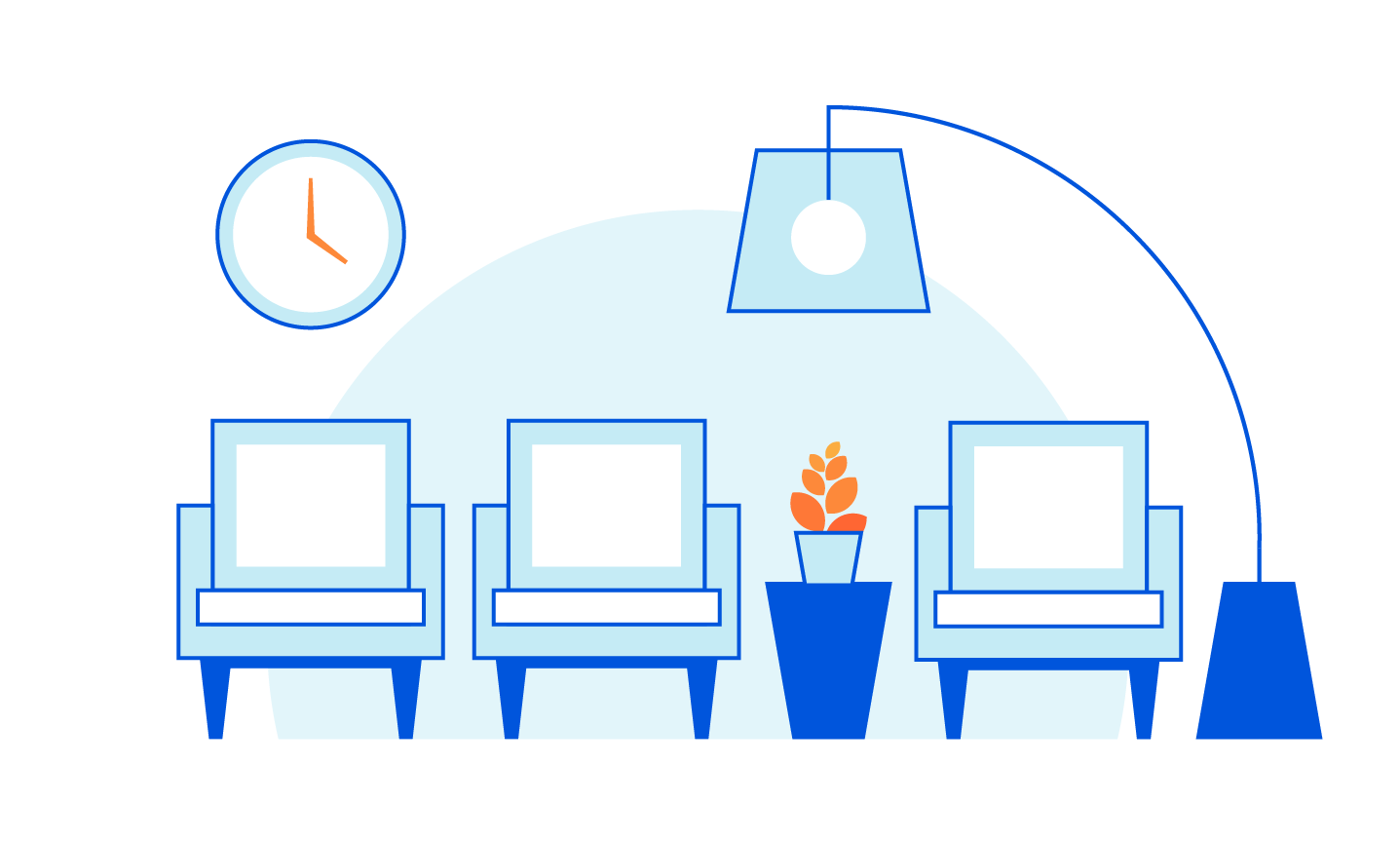Day Two Cloud 102: Edge Cloud Isn’t Magic
Today we're talking Edge Cloud. Guest Alex Marcham has written a book on the subject and we'll get his take on edge infrastructure, what edge cloud is all about, real-world use cases, and how it differs from typical colo facilities or centralized public cloud data centers. We also look at requirements for edge deployments including networking and 5G, and the workloads driving edge infrastructure.
The post Day Two Cloud 102: Edge Cloud Isn’t Magic appeared first on Packet Pushers.
Simplifying Device Provisioning On Private Mobile Networks
Embedded SIMs promise to radically simplify enterprise migration to 4G/5G private mobile networks.Building Waiting Room on Workers and Durable Objects


In January, we announced the Cloudflare Waiting Room, which has been available to select customers through Project Fair Shot to help COVID-19 vaccination web applications handle demand. Back then, we mentioned that our system was built on top of Cloudflare Workers and the then brand new Durable Objects. In the coming days, we are making Waiting Room available to customers on our Business and Enterprise plans. As we are expanding availability, we are taking this opportunity to share how we came up with this design.
What does the Waiting Room do?
You may have seen lines of people queueing in front of stores or other buildings during sales for a new sneaker or phone. That is because stores have restrictions on how many people can be inside at the same time. Every store has its own limit based on the size of the building and other factors. If more people want to get inside than the store can hold, there will be too many people in the store.
The same situation applies to web applications. When you build a web application, you have to budget for the infrastructure to run it. You make that decision according to how many Continue reading
Deploying Plug-and-Pray Software in Large-Scale Networks
One of my readers sent me a sad story describing how Chromium service discovery broke a large multicast-enabled network.
The last couple of weeks found me helping a customer trying to find and resolve a very hard to find “network performance” issue. In the end it turned out to be a combination of ill conceived application nonsense and a setup with a too large blast radius/failure domain/fate sharing. The latter most probably based upon very valid decisions in the past (business needs, uniformity of configuration and management).
Deploying Plug-and-Pray Software in Large-Scale Networks
One of my readers sent me a sad story describing how Chromium service discovery broke a large multicast-enabled network.
The last couple of weeks found me helping a customer trying to find and resolve a very hard to find “network performance” issue. In the end it turned out to be a combination of ill conceived application nonsense and a setup with a too large blast radius/failure domain/fate sharing. The latter most probably based upon very valid decisions in the past (business needs, uniformity of configuration and management).
Post-Pandemic Healthcare Innovations
They say there is always a silver lining in every bad thing that happens. Well for some people 2020 was the worst year of their lives. People lost their loved ones, lost their entire businesses and a lot of bad things happen. However even in such drastic times there was silver lining for the future. The pandemic has forced scientists and doctors to come up with healthcare innovations that would help the work way beyond the time of the pandemic. There were many healthcare innovations that were discussed before the pandemic however they were only put to use in urgency once the pandemic hit.
Let’s take a look at the healthcare innovations that we may keep seeing in the post pandemic times.
Innovative Mindset
In order to keep the innovations coming, the doctors, scientists and researchers should keep an innovative mindset. Without the right mindset you will never be able to carry on with the innovations after the pandemic. So in order to keep the innovations coming after the pandemic, having an innovative mindset is very important.
Remote Communication
The pandemic has shown us that remote communication can be very helpful. People used to believe that face to face communication Continue reading
Telecom APIs: A Key IT Tool to Scale Services and Improve Customer Experiences
Businesses are actively using Telecom APIs to support their distributed workforces, boost customer service and retention, and enable greater scalability of communication capabilities.Forget Mesos And OpenStack, Hashi Stack Is The New Next Platform
While a lot of software for creating and managing scale comes out of supercomputing centers, hyperscalers, and the largest public cloud builders, there is still plenty of innovation being done by people who need to tackle scale outside of these upper echelon organizations. …
Forget Mesos And OpenStack, Hashi Stack Is The New Next Platform was written by Timothy Prickett Morgan at The Next Platform.
Enable secure access to applications with Cloudflare WAF and Azure Active Directory


Cloudflare and Microsoft Azure Active Directory have partnered to provide an integration specifically for web applications using Azure Active Directory B2C. From today, customers using both services can follow the simple integration steps to protect B2C applications with Cloudflare’s Web Application Firewall (WAF) on any custom domain. Microsoft has detailed this integration as well.
Cloudflare Web Application Firewall
The Web Application Firewall (WAF) is a core component of the Cloudflare platform and is designed to keep any web application safe. It blocks more than 70 billion cyber threats per day. That is 810,000 threats blocked every second.

The WAF is available through an intuitive dashboard or a Terraform integration, and it enables users to build powerful rules. Every request to the WAF is inspected against the rule engine and the threat intelligence built from protecting approximately 25 million internet properties. Suspicious requests can be blocked, challenged or logged as per the needs of the user, while legitimate requests are routed to the destination regardless of where the application lives (i.e., on-premise or in the cloud). Analytics and Cloudflare Logs enable users to view actionable metrics.
The Cloudflare WAF is an intelligent, integrated, and scalable solution to protect business-critical Continue reading
DDoS mitigation using a Linux switch
Linux as a network operating system describes the benefits of using standard Linux as a network operating system for hardware switches. A key benefit is that the behavior of the physical network can be efficiently emulated using standard Linux virtual machines and/or containers.
In this article, CONTAINERlab will be used to create a simple testbed that can be used to develop a real-time DDoS mitigation controller. This solution is highly scaleable. Each hardware switch can monitor and filter terabits per second of traffic and a single controller instance can monitor and control hundreds of switches.
Create test network
The following ddos.yml file specifies the testbed topology (shown in the screen shot at the top of this article):
name: ddos
topology:
nodes:
router:
kind: linux
image: sflow/frr
attacker:
kind: linux
image: sflow/hping3
victim:
kind: linux
image: alpine:latest
links:
- endpoints: ["router:swp1","attacker:eth1"]
- endpoints: ["router:swp2","victim:eth1"]
Run the following command to run the emulation:
sudo containerlab deploy ddos.yml
Configure interfaces on router:
interface swp1
ip address 192.168.1.1/24
!
interface swp2
ip address 192.168.2.1/24
!
Configure attacker interface:
ip addr add 192.168.1.2/24 dev eth1
ip route add 192.168.2.0/24 via 192.168.1. Continue reading
Successful Strategies for Building and Growing IXPs

Insights from a comparative study launched today To bring faster, affordable, and resilient connectivity to people, local Internet stakeholders often turn to Internet exchange points (IXPs). They’re a critical digital infrastructure where networks come together to connect and exchange Internet traffic. IXPs help keep domestic Internet traffic local, reducing transit costs, lag time, and providing […]
The post Successful Strategies for Building and Growing IXPs appeared first on Internet Society.
What’s New in the Ansible Content Collection for Kubernetes – 2.0
As the adoption of containers and Kubernetes increases to drive application modernization, IT organizations must find ways to easily deploy and manage multiple Kubernetes clusters across regions, both residing in the public cloud and/or on-premises, and all the way to the edge. As such, we continue to expand on the capabilities of our Certified Ansible Content Collection for kubernetes.core.
In this blog post, we’ll highlight some of the exciting new changes in the 2.0 release of this Collection.
A New Name
Development on the kubernetes.core Collection had historically taken place in the community.kubernetes GitHub repository, which was built off community contributions before Red Hat supported it. That code base served as the source for both Collections. With this release, we have shifted all development to the kubernetes.core GitHub repository. Moving forward, the community.kubernetes namespace will simply redirect to the kubernetes.core Collection. If you are currently using the community.kubernetes namespace in your playbooks, we encourage you to begin switching over to kubernetes.core. This change better reflects that this codebase is a Red Hat supported Collection.
Forward-looking Changes
One of the main objectives of our 2.0 release was to Continue reading
OSPF Inter-Process Route Selection
The traditional wisdom claimed that a Cisco IOS router cannot compare routes between different OSPF routing processes. The only parameter to consider when comparing routes coming from different routing processes is the admin distance, and unless you change the default admin distance for one of the processes, the results will be random.
Following Vladislav’s comment to a decade-old blog post, I decided to do a quick test, and found out that code changes tend to invalidate traditional wisdom. OSPF inter-process route selection is no exception. That’s why it’s so stupid to rely on undefined behavior in your network design, memorize such trivia, test the memorization capabilities in certification labs, or read decades-old blog posts describing arcane behavior.
OSPF Inter-Process Route Selection
The traditional wisdom claimed that a Cisco IOS router cannot compare routes between different OSPF routing processes. The only parameter to consider when comparing routes coming from different routing processes is the admin distance, and unless you change the default admin distance for one of the processes, the results will be random.
Following Vladislav’s comment to a decade-old blog post, I decided to do a quick test, and found out that code changes tend to invalidate traditional wisdom. OSPF inter-process route selection is no exception. That’s why it’s so stupid to rely on undefined behavior in your network design, memorize such trivia, test the memorization capabilities in certification labs, or read decades-old blog posts describing arcane behavior.
The uselessness of bash
The way I write automation for personal projects nowadays seems to follow a common pattern:
- A command line, that’s getting a bit long
- A bash script
- Rewrite in Go
Occasionally I add a step between 2 and 3 where I write it in Python, but it’s generally not actually gaining me anything. Python’s concurrency primitives are pretty bad, and it’s pretty wasteful.
Maybe there’s an actually good scripting language somewhere.
I should remember that writing a bash script (step 2) seems to almost never be worth it. If it’s so complicated that it doesn’t fit on one line, then it’ll become complicated enough to not work with bash.
There are two main things that don’t work well. Maybe there are good solutions to these problems, but I’ve not found them.
1. Concurrency
There are no good primitives. Basically only xargs -P and &. It’s
annonying when you have an embarrassingly parallelizable problem where
you want to run exactly nproc in parallel.
Especially error handling becomes terrible here.
2. Error handling
You can handle errors in bash scripts in various ways:
||operator. E.g.gzip -9 < a > a.gz || (echo "handling error…")set -eat the top Continue reading
Intel Braces For DPU Hit, Awaits Jevon’s Paradox Bounce
We said this a long time ago, and we are going to say it again now. …
Intel Braces For DPU Hit, Awaits Jevon’s Paradox Bounce was written by Timothy Prickett Morgan at The Next Platform.
